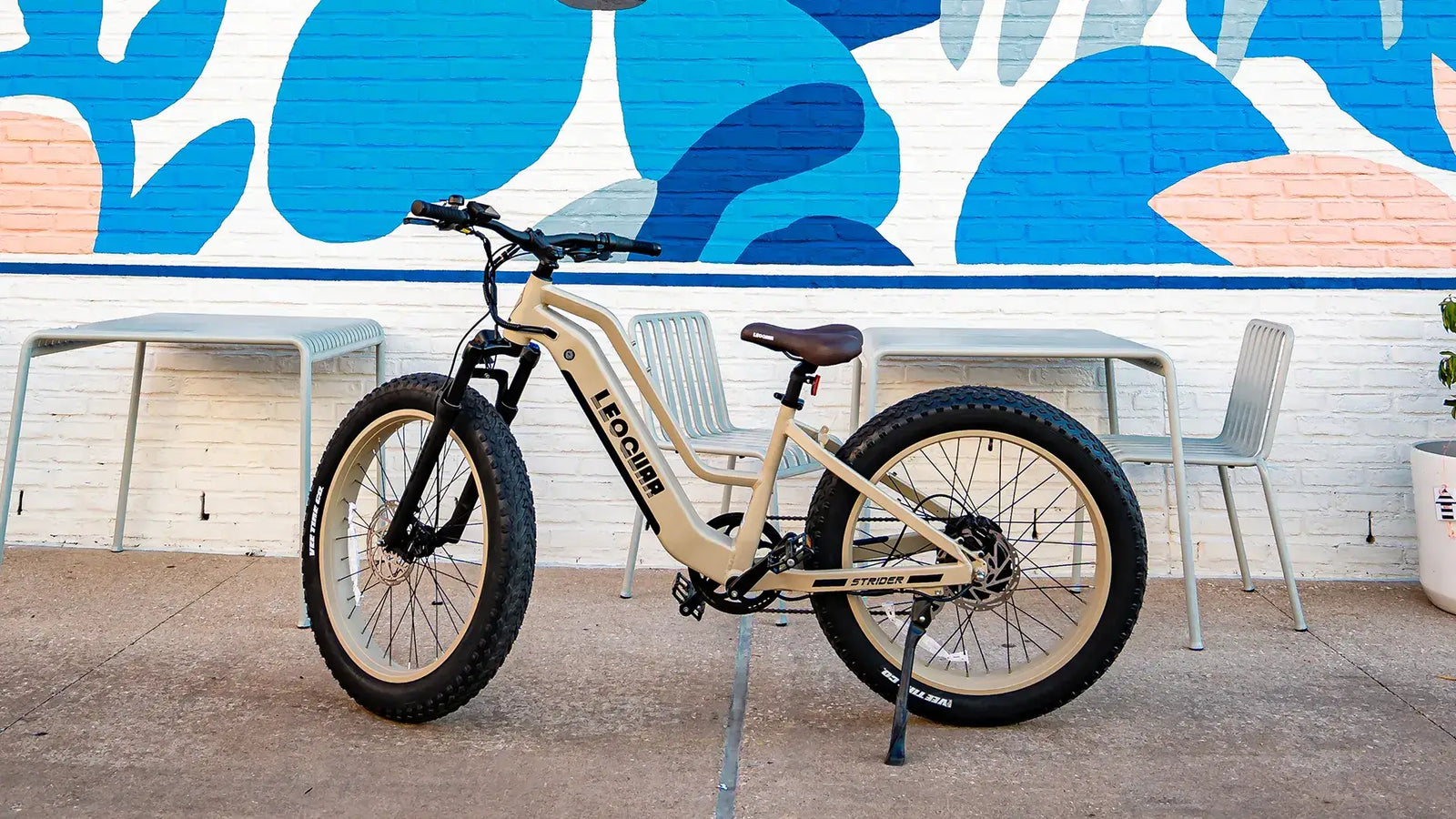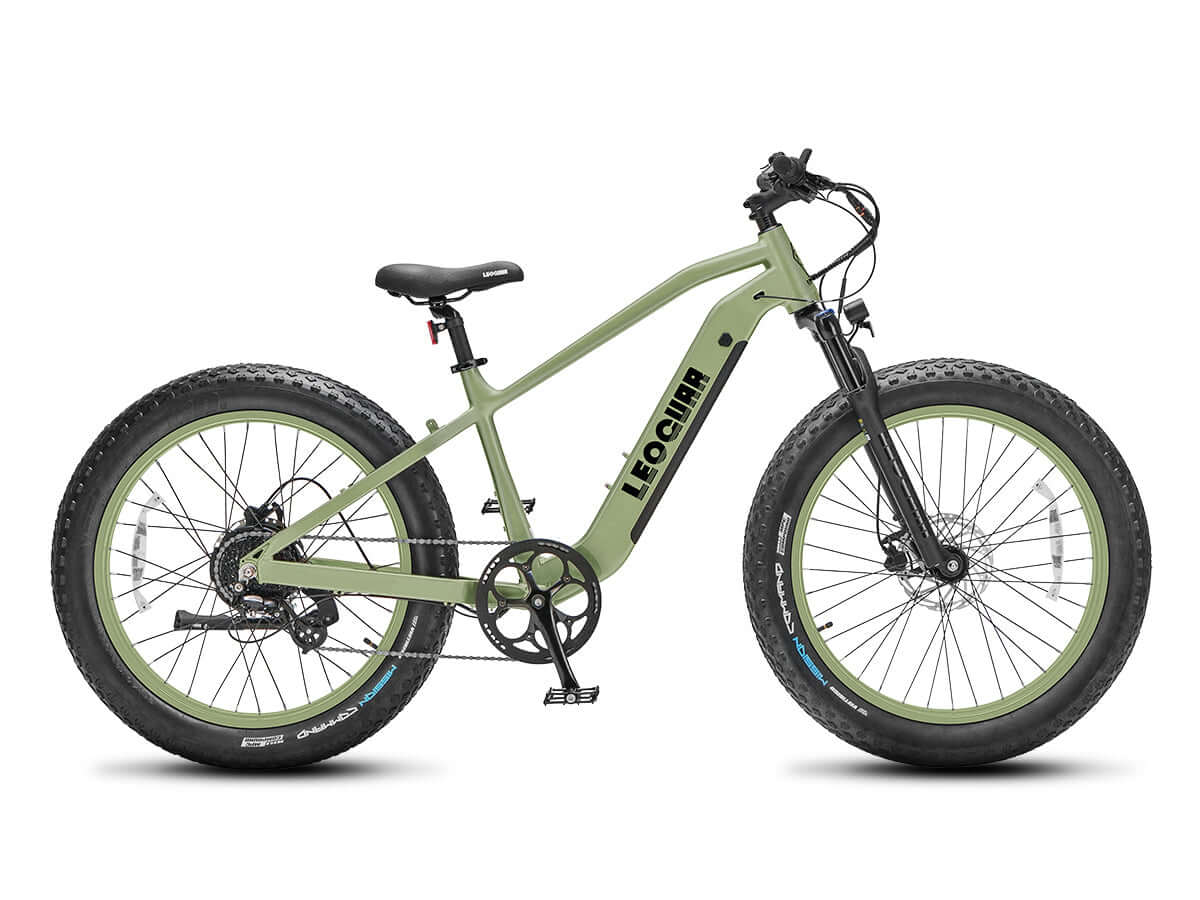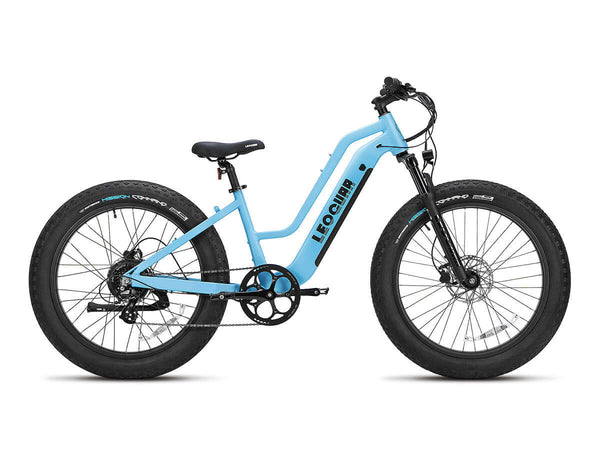
Hardtail Mountain Bike Buying Guide: Choosing the Right Frame for Your Trails
Choosing your next hardtail mountain bike can feel overwhelming. The market has tons of options, and technical words can make it seem like you need an engineering degree just to understand the specs. We get it. But here's the secret: the "best" hardtail mountain bike isn't about the most expensive parts. It's about finding the frame with the right material and geometry that perfectly matches your riding style and your local trails. This guide will help you understand the core concepts, helping you decode frame materials, understand key geometry numbers, and ultimately choose the perfect frame with confidence.
Why the Frame Matters
A hardtail mountain bike has a suspension fork up front but a rigid rear triangle. This simple design is its greatest strength and the very reason the frame is so critical. Unlike a full-suspension bike where a rear shock helps absorb bumps, on a hardtail, the frame's design and material are almost solely responsible for how the bike feels, handles, and transfers power.
Think of the frame as the bike's skeleton. It controls every aspect of its personality—how it speeds up, how it carves through corners, how it climbs, and how much feedback you feel from the trail. Every other component is attached to it, but the frame defines the core experience. The praised simplicity and efficiency of a hardtail design means your choice of frame has a more direct impact on ride quality than on any other type of mountain bike.
Decoding Frame Materials
The material of a hardtail mountain bike frame is its base ingredient. It defines its weight, stiffness, ride feel, and cost. There is no single "best" material, only the best material for your goals and budget.
Aluminum Alloy: The Workhorse
Aluminum is the most common frame material for a reason. It's relatively lightweight, strong, resistant to rust, and offers an excellent balance of performance and cost. Modern shaping techniques allow manufacturers to shape aluminum tubes to be stiff where needed for power transfer and more flexible elsewhere for comfort. Its responsive, snappy feel makes it a fantastic choice for riders who want direct feedback from the trail.
Rider Profile: Ideal for beginners, budget-conscious riders, and anyone looking for a durable, responsive, and low-maintenance bike for general trail riding.
Carbon Fiber: The Speed Machine
Carbon fiber is the premium choice for performance. It has the best stiffness-to-weight ratio of any material, meaning frames can be built to be incredibly light without giving up the rigidity needed for explosive acceleration and precise handling. This is why it dominates the competitive XC racing scene. Furthermore, engineers can "tune" the carbon layup, adding or removing material and orienting fibers to make a frame that is stiff in one direction (like pedaling) and flexible in another (absorbing trail vibrations).
Rider Profile: Racers, performance-focused riders, and anyone who puts weight savings and pedaling efficiency above all else.
Steel (Chromoly): The Classic
There's a reason riders talk about the "feel of steel." Chromoly (or "cro-mo") steel frames are known for their natural flexibility and vibration-damping properties. This creates a smoother, less tiring ride on long days and rough terrain. While heavier than aluminum or carbon, steel is incredibly durable and can often be repaired by a skilled welder if damaged. It's the soul of many bikepacking and hardcore hardtail builds, including some impressively affordable steel hardtail options.
Rider Profile: Bikepackers, long-distance trail riders who value comfort, and purists who want a durable, smooth-riding bike with a classic look.
Titanium: The Dream Material
Titanium offers a "best of all worlds" combination of properties. It has the beautiful, flexible ride feel of steel, is significantly lighter (approaching aluminum weights), and is completely resistant to rust and fatigue. A well-built titanium frame is often considered a "forever bike" due to its incredible durability. The only major drawback is its very high cost, which is due to the price of the raw material and the difficulty of welding it.
Rider Profile: Discerning riders with a large budget seeking a premium, lifetime bike that blends performance, comfort, and craftsmanship.
Material Comparison
| Material | Key Pros | Key Cons | Typical Price | Best For (Rider Type) |
|---|---|---|---|---|
| Aluminum | Affordable, Stiff, Lightweight | Can feel harsh on rough trails | $ - $$ | Beginners, All-Around Trail |
| Carbon Fiber | Lightest, Stiffest, Tunable Ride | Expensive, Less impact-resistant | $$$ - $$$$ | XC Racers, Performance Riders |
| Steel | Smooth Ride, Durable, Repairable | Heavier than other materials | $$ - $$$ | Bikepackers, Comfort-Seekers |
| Titanium | Smooth Ride, Lightweight, "Forever" | Extremely expensive | $$$$ | Discerning Riders, Lifetime Bike |
Geometry Dictates Your Ride
If material is the ingredient, geometry is the recipe. It's the collection of angles and lengths that define a frame's shape and, more importantly, its personality on the trail. Understanding a few key numbers will transform you from a confused buyer into an informed one.
Head Tube Angle (HTA)
This is the angle of the fork's steering tube relative to the ground. It's the single most important number for defining a bike's handling intentions.
Slack HTA (e.g., 64-66°): Think of a chopper motorcycle. The front wheel is pushed further out. This makes the bike incredibly stable at high speeds and on steep descents, giving the rider a huge boost of confidence. The trade-off is slower, less precise steering on tight, flat corners and climbs. It feels planted and secure when pointed downhill.
Steep HTA (e.g., 67-69°): Think of a road race bike. The front wheel is tucked in closer. This results in quick, nimble, and responsive steering. It's great for navigating tight, twisty trails and feels incredibly efficient on climbs. The downside is it can feel "twitchy" or nervous on steep, fast descents. It feels agile and eager to change direction.
Reach and Stack
These two measurements define the size and feel of the cockpit when you're standing on the pedals.
Reach: The horizontal distance from the bottom bracket to the head tube. A longer reach gives you more room to move around on the bike and increases stability, making the bike feel more composed at speed. A shorter reach makes the bike feel more compact and easier to "flick" around.
Stack: The vertical distance from the bottom bracket to the head tube. A higher stack provides a more upright and comfortable riding position, taking pressure off your back. A lower stack puts you in a more aggressive, forward-leaning position for better aerodynamics and climbing power.
Chainstay Length
This is the length of the rear triangle, measured from the bottom bracket to the rear axle.
Short Chainstays: These make the rear end of the bike feel nimble and playful. It's easier to lift the front wheel for manuals and wheelies, and the bike feels quick to whip through tight corners.
Long Chainstays: These increase the bike's overall wheelbase, enhancing stability at high speeds. They also help keep the front wheel planted on steep climbs, improving traction and preventing the front end from wandering.
Matching Frame to Trail
Now, let's put it all together. Instead of getting lost in numbers, identify what kind of rider you are. This is the most effective way to narrow down your perfect frame.
The XC Racer & Fitness Enthusiast
Your Trails: You thrive on smooth singletrack, fire roads, and long, grueling climbs. Speed and efficiency are your top priorities.
You Want: Maximum power transfer and minimum weight to fly up hills and cover ground quickly.
Frame Prescription: You need a lightweight frame that rewards every pedal stroke. A carbon fiber or high-end aluminum frame is your best bet. Look for steep, aggressive geometry: a head tube angle around 68-70°, a long reach, and a low stack. This puts you in a powerful, forward-leaning position, perfect for attacking climbs and sprinting on the flats. This is the formula for the best budget XC race hardtail and its high-end counterparts.
The All-Day Explorer & Bikepacker
Your Trails: You enjoy the journey as much as the destination. Your rides are long, covering everything from gravel paths to technical singletrack, often lasting for hours or even days.
You Want: Comfort for long hours in the saddle, durability to handle a loaded bike, and versatility to tackle any terrain you encounter.
Frame Prescription: Ride quality is king. A steel or titanium frame will provide the flexibility needed to soak up trail chatter and reduce fatigue. Look for balanced, neutral geometry that is comfortable for both climbing and descending. Crucially, you'll want a frame with plenty of mounts for racks, fenders, and multiple water bottles.
The Aggressive Trail Tamer
Your Trails: You climb only to earn the descent. Your idea of fun is rowdy, technical downhills, hitting jumps, and tackling drops.
You Want: Unshakeable stability, confidence-inspiring handling, and the durability to take a beating.
Frame Prescription: You need a frame built for gravity. A robust aluminum or steel frame is ideal for its strength and reliability. The key here is aggressive, modern geometry. Look for a very slack head tube angle (66° or less), a long reach for stability, and short chainstays to keep the bike playful. When we ride a slack hardtail down a steep, rooty section, the difference is night and day compared to an XC bike. You feel like you are sitting in the bike, not perched on top of it, giving you the confidence to let go of the brakes and trust the bike.

Getting the Right Fit
We can't say this enough: even the most perfectly designed frame is useless if it's the wrong size. A poor fit leads to discomfort, a lack of control, and can even cause injuries. This is the one area you cannot compromise on.
Reading a Size Chart
Every manufacturer provides a size chart, which is your best starting point. These charts typically use your height and inseam to recommend a size (S, M, L, etc.). If you find yourself between two sizes, the "Reach" number is your tie-breaker. Choosing the smaller size (shorter reach) will result in a more playful and nimble bike. Opting for the larger size (longer reach) will give you a more stable and planted ride. The choice often comes down to personal preference and your intended riding style.
The Ultimate Test Ride
Charts and numbers can only tell you so much. The best way to confirm the fit and function is to test ride a bike. When we test bikes, we're not just checking if we can stand over the top tube. We're pedaling around, even if it's just in a parking lot, to feel if the cockpit is too cramped or too stretched out. Does the riding position feel natural? Can you comfortably reach the handlebars without straining? This initial feel is a huge indicator of long-term comfort and control on the trail. If possible, demo a bike from a local shop on a real trail. There is no substitute for real-world experience. With so many options available, you're sure to find one in a sample of the latest hardtails to hit the market.
Choose with Confidence
The journey to finding the perfect hardtail mountain bike frame is a personal one. It's about finding the right balance between your local trails, your unique riding style, and your budget. Don't get fixated on a single material or number. Instead, use the Trail-First Framework: first, identify what kind of rider you are—the XC Racer, the All-Day Explorer, or the Aggressive Tamer. Then, seek out the corresponding geometry and material that fits your budget.
By focusing on how a frame's characteristics will serve your riding, you move beyond the marketing hype and make an informed decision. Now you have the knowledge to choose with confidence. Go find the frame that will be the soul of your next great adventure.
Frequently Asked Questions
1. Q: What's the difference between a hardtail and full-suspension mountain bike?
A: A hardtail mountain bike has a suspension fork in the front but no rear suspension, making it lighter and more efficient for climbing. Full-suspension bikes have both front and rear suspension, providing more comfort on rough terrain but adding weight and complexity.
2. Q: Which frame material is best for beginners?
A: Aluminum is typically the best choice for beginners. It offers a good balance of performance, durability, and affordability while being low-maintenance. It provides responsive handling that helps new riders learn proper technique.
3. Q: How do I know what size hardtail mountain bike frame I need?
A: Start with the manufacturer's size chart using your height and inseam measurements. The reach measurement is crucial - shorter reach gives a more playful feel, while longer reach provides more stability. Always test ride if possible to confirm the fit feels comfortable.
4. Q: Can I upgrade components on my hardtail mountain bike frame later?
A: Yes, most components can be upgraded over time, including the fork, wheels, drivetrain, and brakes. However, the frame geometry and material cannot be changed, which is why choosing the right frame initially is so important.
5. Q: What's the most important geometry number to consider when choosing a hardtail mountain bike frame?
A: The head tube angle is the most critical number as it determines the bike's handling character. Steeper angles (67-69°) provide quick, nimble handling for climbing and tight trails, while slacker angles (64-66°) offer stability for descending and high-speed riding.










































Leave a comment